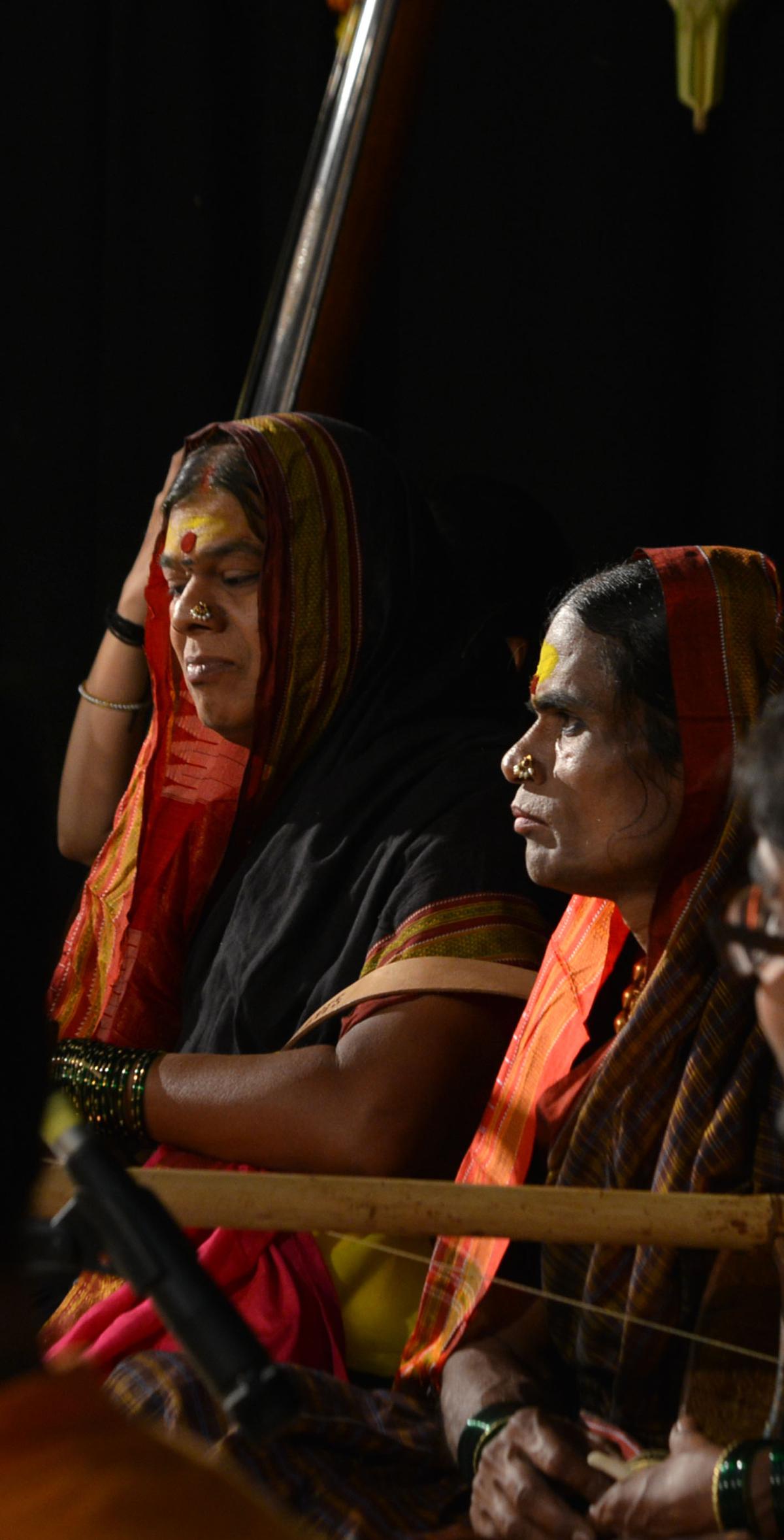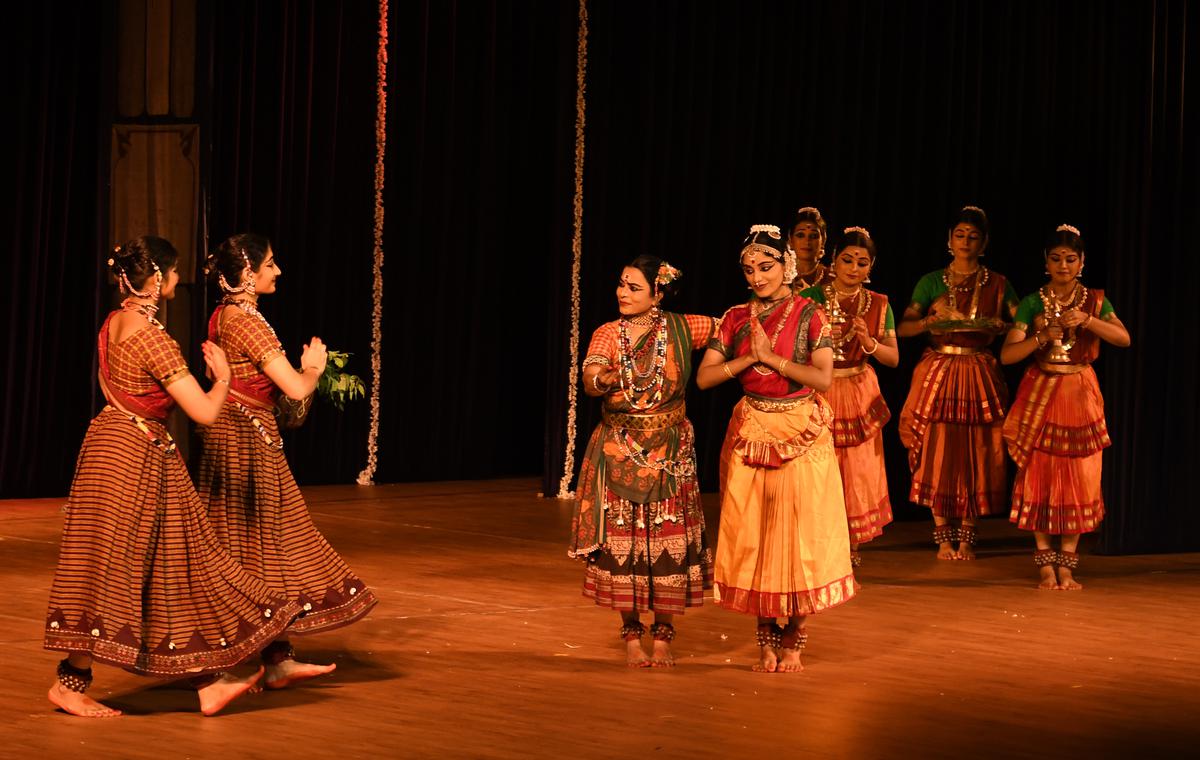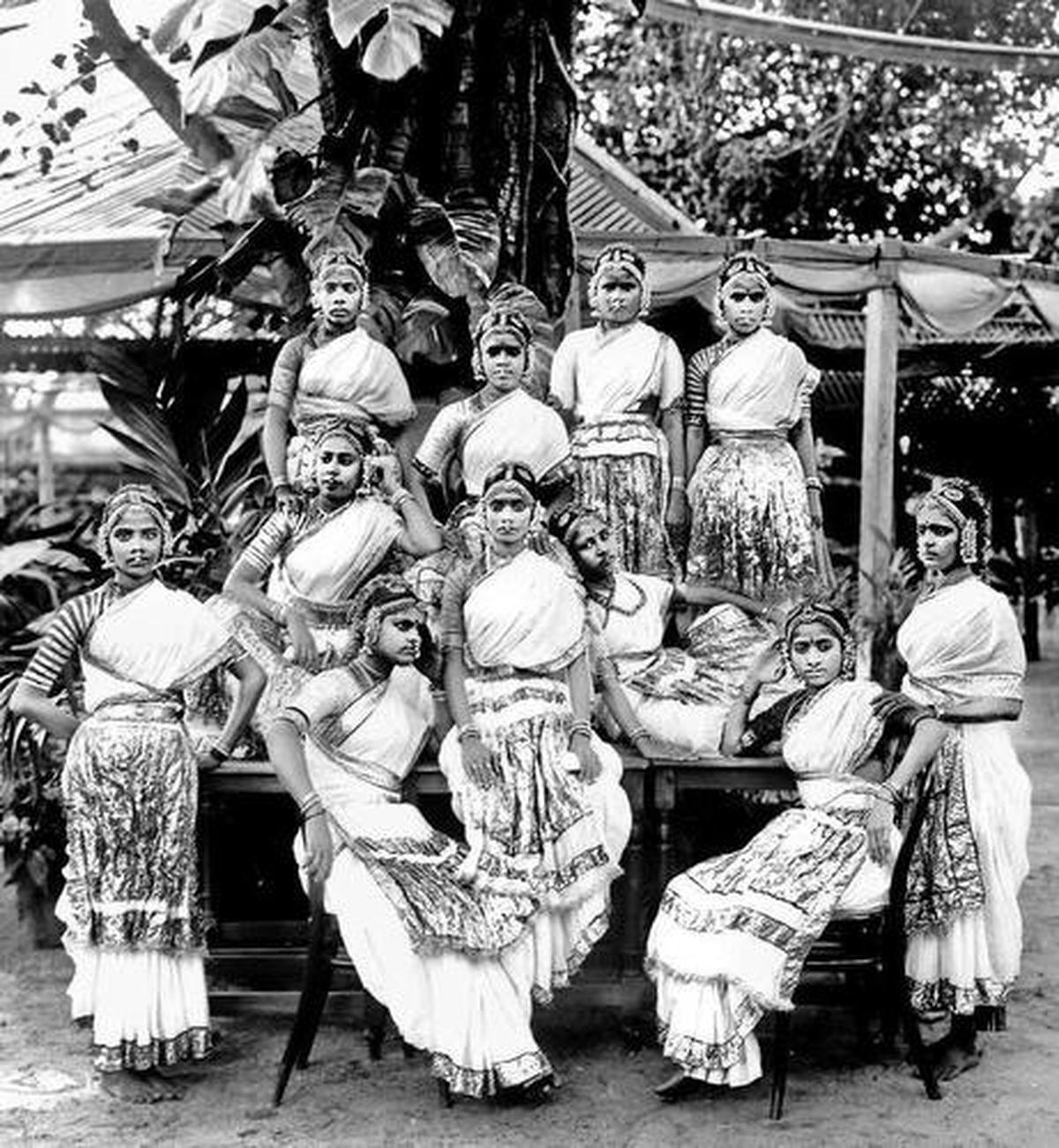Picturise a village, not far from the sea, full of lush green fields with clusters of coconut palms swaying in the wind. A group, led by a woman accompanying her young daughter and friends, walks slowly to Thirukkannapuram. Hoping to make the long journey less tiring, the group breaks into a song —
thoNdIr! uyyum vagai kaNdEn
thuLangkA arakkar thuLangka
mun thiNthOL nimirach silai vaLaiyach
siRidhE munindha thirumArban
vaNdAr kUndhal malarmangkai
vadikkaN madandhai mAnOkkam kaNdAn
kaNdu koNdu ugandha
kaNNapuram nAm thozhudhumE
This Tamil poem composed as a ‘Vazhinadai Chindu’ was authored by the enigmatic Tirumangai Azhwar, who holds the rare distinction of being a ‘narkavi perumal’ or a poet well-versed in the four major types of poems in the Tamil language.
Folk songs, as they are commonly known today, are the creative manifestations of rural subcultures. For instance, this eighth century work, sung with lilting music, was created not only with the intention to highlight the qualities of the deity Sowriraja but to also act as a stressbuster while walking to the Thirukkannapuram temple, in the outskirts of Nagapattinam in Tamil Nadu.
In the Carnatic concert format, a Kavadi Chindu or Vazhinadai Chindu was made part of the thukkada section, a relatively less-important addition in the grand hierarchy of kutcheri-worthy compositions.
Discussions surrounding the usage of the words ‘classical’ and ‘folk’ to classify Indian art forms are certainly post-colonial. Indian art is beyond such superficial linguistic divisions. However, this argument needs to be accompanied with a deeper understanding of artistic hierarchies.

Jogappas performing at an event in Bengaluru in 2016.
| Photo Credit:
BHAGYA PRAKASH
Musician-activist T.M.Krishna delves deeply into the sociopolitical issues and writes in his essay ‘Classically Yours’ that practitioners of classical music seek a certain antiquity — a past of a certain kind, belonging to a certain group and speaking in a certain language. While keeping all these factors and distinctions in mind, one finds that Carnatic music is quite deeply influenced by folk traditions and has liberally borrowed from the latter much beyond what we hear in post-main sections of the kutcheris. Such mutual interactions between art forms are inevitable and essential for the growth and evolution of society and culture.
Many Carnatic musicians, at least in recent years, have made sincere attempts to engage with Tamil folk art forms such as naatupura isai, villu paatu and kattaikkoothu. Even as early as 2009, senior vocalist S. Sowmya examined the influence of folk music on the classical tradition in her thematic programme for Margazhi Maha Utsavam. Taking Anandabhairavi as an example of a raga that originated as a folk tune, she analysed how the antara gandharam and kakali nishadam are considered foreign influences in the codified Anandabhairavi. She credited her guru S. Ramanathan with researching various aspects of folk music quite passionately.
In the programme, Sowmya also talked about how Punnagavarali, a raga commonly used by communities who work with snakes for a living, wound its way into the Carnatic repertoire, using Tyagaraja’s composition from the Nauka Charitram ‘Gandhamu puyyaruga’ to highlight her point.
Thus, Punnagavarali, a raga that is considered difficult and phrase-oriented, acquired the label of ‘classical’ when used by Carnatic composers such as the Trinity who have extensively handled the raga in their compositions.
Vocalist Brindha Manickavasakan collaborated with Bharathi Thirumagan and her group of Villupaatu artistes at the Cusp festival in 2020. The theme was ‘Nandanar Charitram’ as written by the composer Gopalakrishna Bharathi.
Brindha and Bharathi examined the intersection of the classical and folk forms using various compositions from Gopalakrishna Bharathi’s grand opera that served as a perfect drawing board to seamlessly blend both the traditional forms and observe their commonalities.
T.M. Krishna, in a rare performance, sang alongside the Jogappas, a group of transwomen based out of a region that encompasses rural Maharashtra and Karnataka. The performance did not carry the label of a fusion concert or a collaboration, instead sought to bring out the two very distinct flavours of Carnatic music and the folk art of the Jogappas on a common stage. Through their native musical form, which includes Purandaradasa devaranamas and songs on rural deities, the Jogappas prove to a largely transphobic society that their marginalised queer identity is as Indian as any other identity.
Incorporating folk elements in Bharatanatyam and other classical dance forms has been more explicit, vibrant and visible in addition to being viable and even essential to break the monotony associated with the somewhat rigid format of the margam.
Vazhuvoor Ramaiah Pillai introduced a separate folk section in his disciples’ dance programmes. Entire productions based on temple festivals and modern adaptations of folklore find their place today on the classical dance stage.
Post the reinvention of Bharatanatyam, women from the hereditary community of dance practitioners taught their students many pieces strongly rooted in folk traditions — from Kummi and Kolattam to snake dances. Kuravanjis, elaborate dance dramas incorporating several folk elements were performed by devadasis in temples.

‘Krishnamari Kuravanji’ presented at Kalakshetra foundation in January 2023.
| Photo Credit:
JOTHI RAMALINGAM B
T. Balasaraswati taught specific pieces from larger operas such as Valli Bharatham and Sarabhendra Bhupala Kuravanji to her students. One of the pieces titled ‘Aalolam’ from the Valli Bharatham, follows the life of a young village woman whose job is to keep birds away from her father’s fields.
In fact, Sadir, the precursor to Bharatanatyam as it is performed today, seems to have been partially rooted in rural folk sensibilities. The character of the dance form metamorphosed when it was predominantly taken up by more urban savarna communities, and Bharatanatyam is today hailed as a classical dance primarily due to the caste and social location of the performers.
Sathir dancer and last of the Devadasis R. Muthukannammal of Viralimalai selected as one of the Padma Shri awardees this year shows some of dance steps at the foot of the Viralimalai Murugan Temple in Pudukottai district on Wednesday morning. Photo. Moorthy M / The Hindu
| Photo Credit:
Moorthy_M
Viralimalai Muthukannammal is a living testimony to the fact that devadasis were talented performers of several kinds of folk dance forms that were part and parcel of their large repertoire. Muthukannammal has performed salaamu sabdams in praise of Thanjavur Maratha kings, group dances like kolattam at Viralimalai and Thirugokarnam and even other unusual pieces like ‘Modi’ and Nottuswarams that are out of vogue today. Thanks to her efforts at preservation and dissemination of these pieces, her students continue to perform them.

A group of devadasis before a performance in Madras in the early 20th century.
| Photo Credit:
VINTAGE VIGNETTES
Reading the written accounts by several European administrators and visitors, one realises that salon performances by hereditary dancers in Madras city incorporated several entertainment sections that can hardly be deemed ‘classical’ according to today’s definitions. Women have danced on the sharp edges of swords fixed on a ladder simultaneously cutting pieces of sugarcane with their feet. Dancers performed acrobatic feats and presented pinnal kolattam, a form which makes use of a string fixed on the ceiling. Even standing on the edge of a brass plate, a regular feature in Kuchipudi recitals, has folk origins as Telugu-speaking devadasis regularly performed such dances in the Godavari river delta and the Nellore and Chittoor districts of present day Andhra Pradesh. Studying dance history tells us that rigid classifications of dance forms into classical and folk are more recent.
Today, as Indian society is changing, artistes and art lovers are learning to admire the wisdom and charm of folk art forms and are attempting to bridge the divide between classical and folk. The classical music and dance scene in Chennai is slowly adapting to this cause and has made some changes aimed at inclusion but much more is to be done.
As we march ahead to the future, let us not forget that our country is represented by several art forms sustained and carried forward by many communities who possess diverse perspectives and thought processes. One must possess the intellectual maturity to realise that not all art forms are equally represented on the global stage as Indian art forms. What is certainly within our grasp is periodically taking measures and steps to ensure that no form is left behind.
For all the latest Entertainment News Click Here
For the latest news and updates, follow us on Google News.
